Between Two Rivers by Siba Sahabi
Amsterdam-based designer Siba Sahabi made these carafes and cups by coiling strips of felt on a potter's wheel (+ movie).
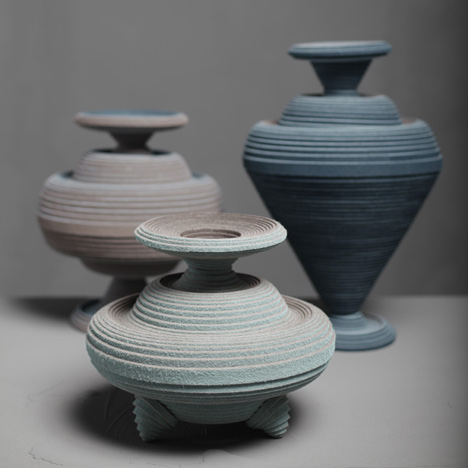
Between Two Rivers refers to the translation of the ancient Greek word Mesopotamia, an area of the Middle East where the earliest civilisations are thought to have developed and where the potter's wheel was first used.
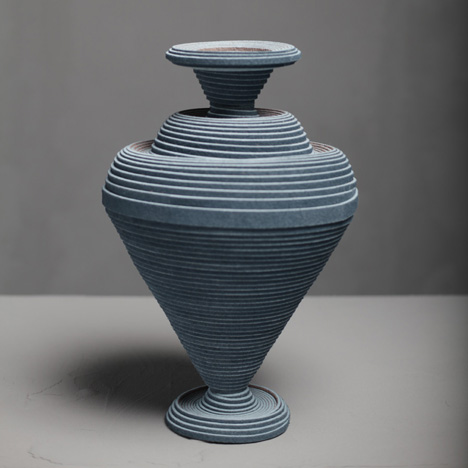
Inspired by the development of ceramics after this invention, Siba Sahabi used a potter's wheel to wind strips of felt into ten sculptural vessels.
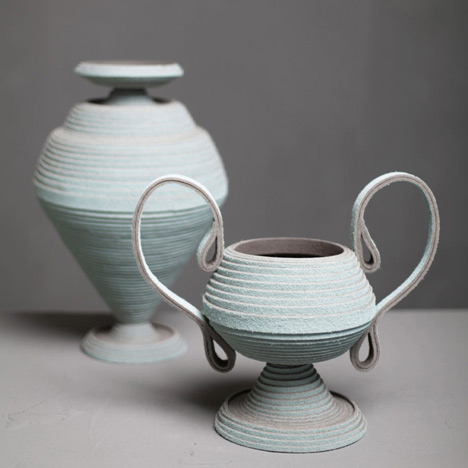
The carafes and cups are made from strips coated with a layer of paint on both sides, so that the original colour contrasts with the paint on the inside and outside.
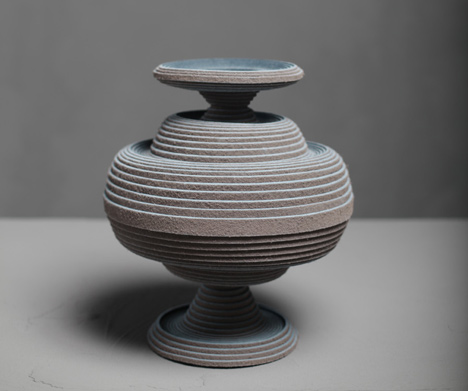
Sahabi also collaborated with Lisa Klappe and Niels van den Top on a movie (top) that shows the process of making the vessels.
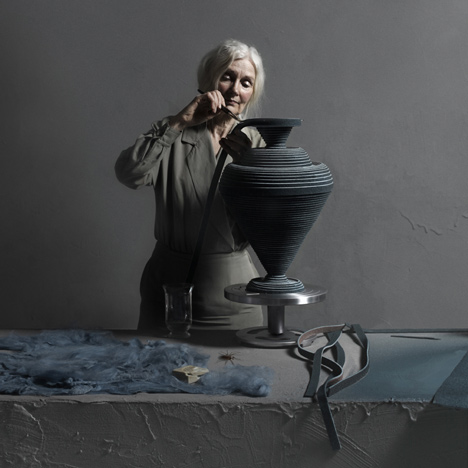
The collection is on show at Museum Ons' Lieve Heer op Solder in Amsterdam as part of Winter Salon 2013 until 17 February.
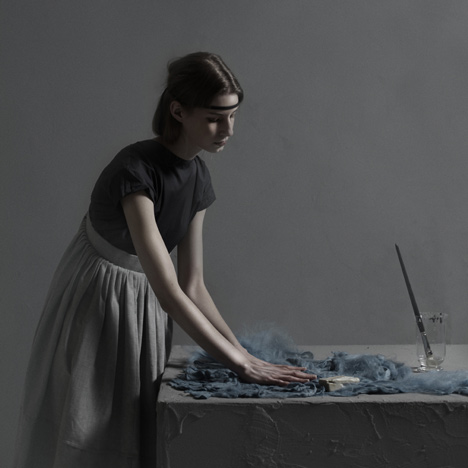
Sahabi has previously produced vessels from coils of black wallpaper and candle holders from rings of felt.
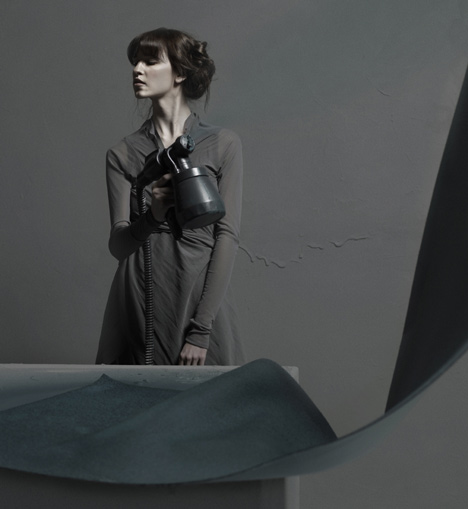
Other felt objects we've featured include felt lights with switches shaped like nipples and jewellery made from computer parts mounted in felt – see all designs made from felt.
See all vessels »
See all homeware »
Photographs are by Lisa Klappe.
Here's some more information from Sahabi:
Siba Sahabi’s new collection of felt vessels entitled Between Two Rivers launched during WinterSALON/ 2013 in Amsterdam.
Between Two Rivers is the ancient Greek translation of the term Mesopotamia, the cradle of Western civilisation, birthplace of the pottery turntable and primary inspiration of designer Siba Sahabi for her new collection. Through ten new sculptural felt vessels Siba makes the connection between this ancient land - located between the rivers - with its pottery innovations and Western ceramics culture which developed through these new technologies.
The turntable, that aided potters to design circular objects more accurately and faster, was invented in 3500 BC in Ur, an ancient Mesopotamian city-state located in modern Iraq. Around 2200 BC this invention was introduced in Greece and thus sparked a new style of Greek ceramics called Minyan pottery which Siba has reinterpreted in her felt sculptures.
A circular, ribbed finish is one of the distinguishing characteristics of Minyan ware which reflects its production process on a potter's turntable. Although the turntable no longer plays a significant role in the production of modern large-scale pottery today, the appearance of hand-turned ceramics is often imitated by producing circular shapes with fine ridges.
The objects from the collection, that comprise a series of carafes and cups, are made from coiled coloured felt strips (3mm thick) coated with a layer of paint on both sides. In this way, each object shows three colours: the original colour of the felt (surface of the ridges), the inside, and outside of the objects. The dense felt material beautifully translates the heavy appearance of the Minyan ware and exaggerates the appearance of the oversized objects, some of which are up to 50cm high.
A specially-commissioned film is screened alongside the exhibition. Made by Siba Sahabi in collaboration with Lisa Klappe and Niels van den Top, the short film entitled ‘Pallas Athena’ juxtaposes the setting of a Greek pre-antique pottery workshop with the modern techniques of the felt coiling used in Siba’s objects. The short film is dedicated to the wise but short-tempered Greek goddess of inspiration, crafts, art and war. According to myth Pallas Athena taught textile classes to, among others, a talented but troubled student called Arachne who denied that she was taking lessons if ever asked. To punish Arachne for not acknowledging her teacher, Pallas Athena turned her into a spider.
The collection was realised with the support of the Amsterdams Fonds voor de Kunst.
Between Two Rivers is exhibited during WinterSALON/ 2013 at Museum Ons' Lieve Heer op Solder, Amsterdam from 19 January – 17 February 2013.